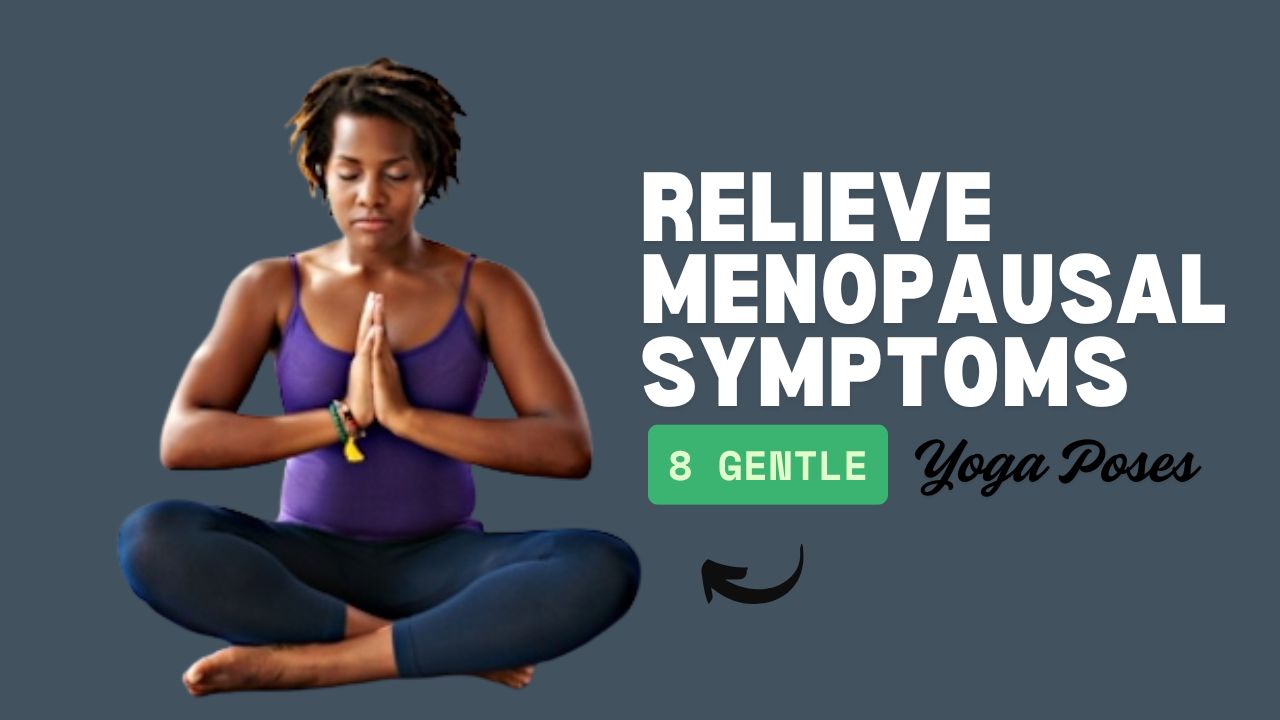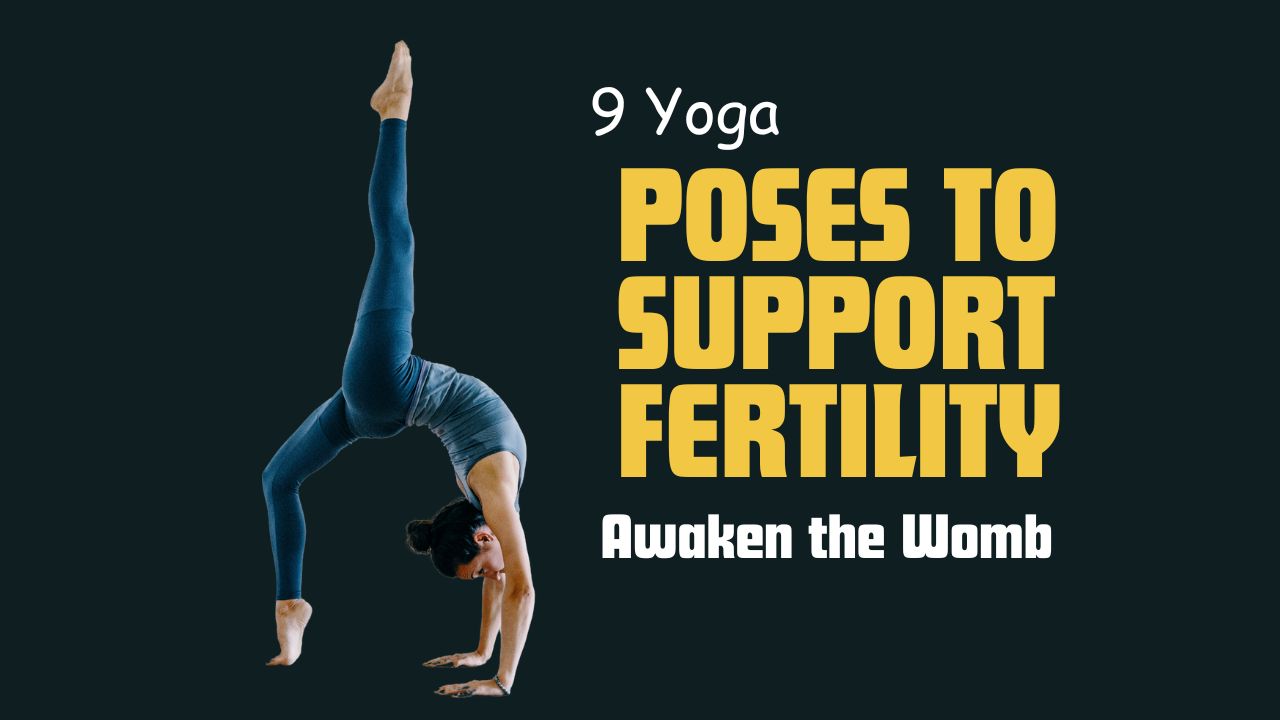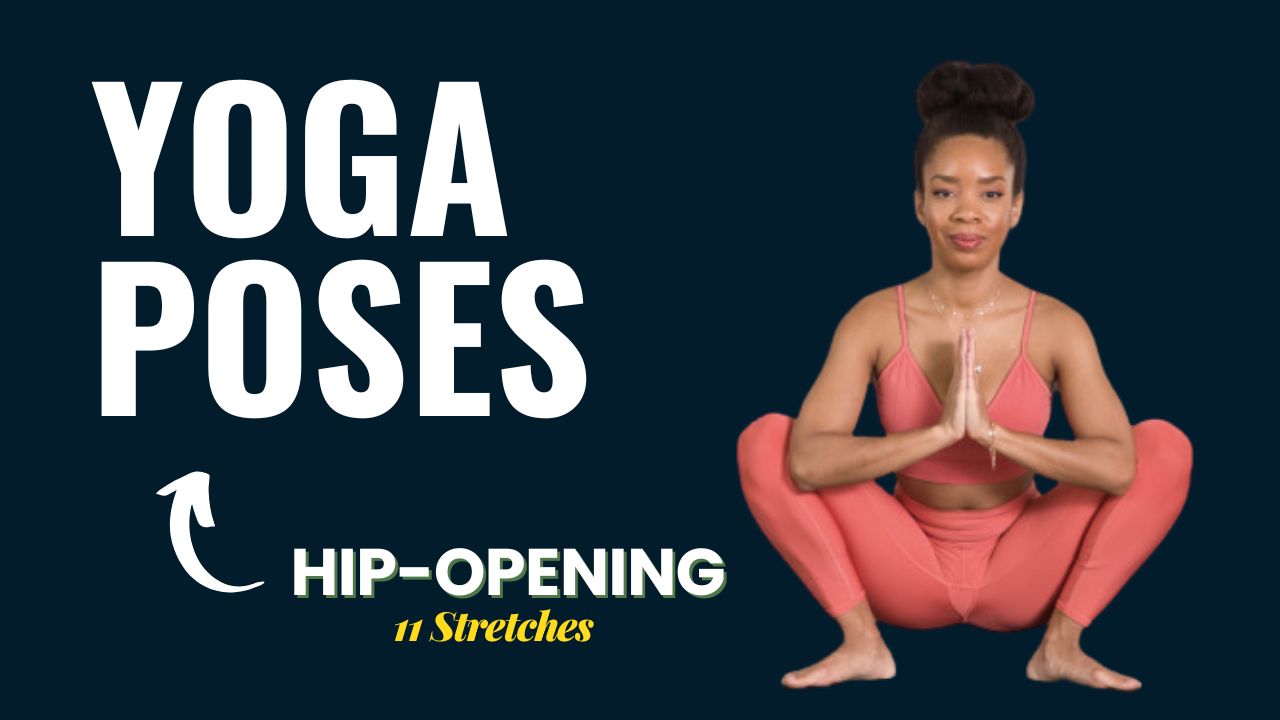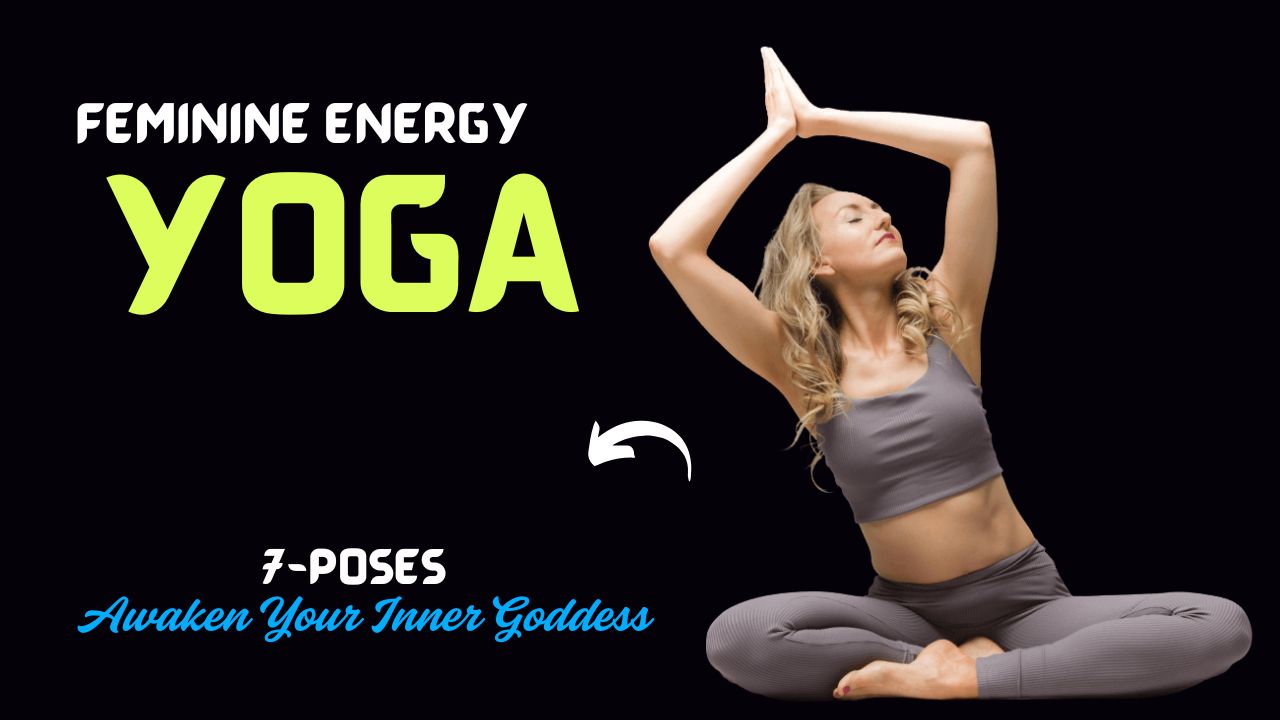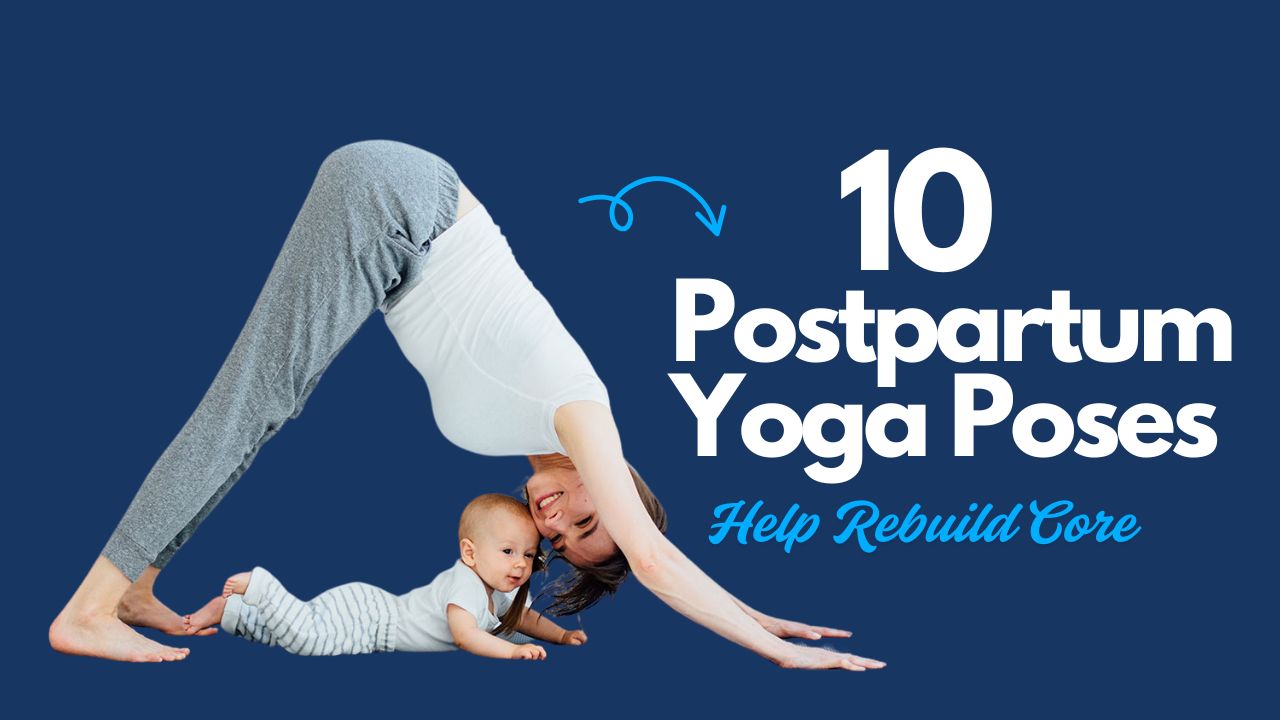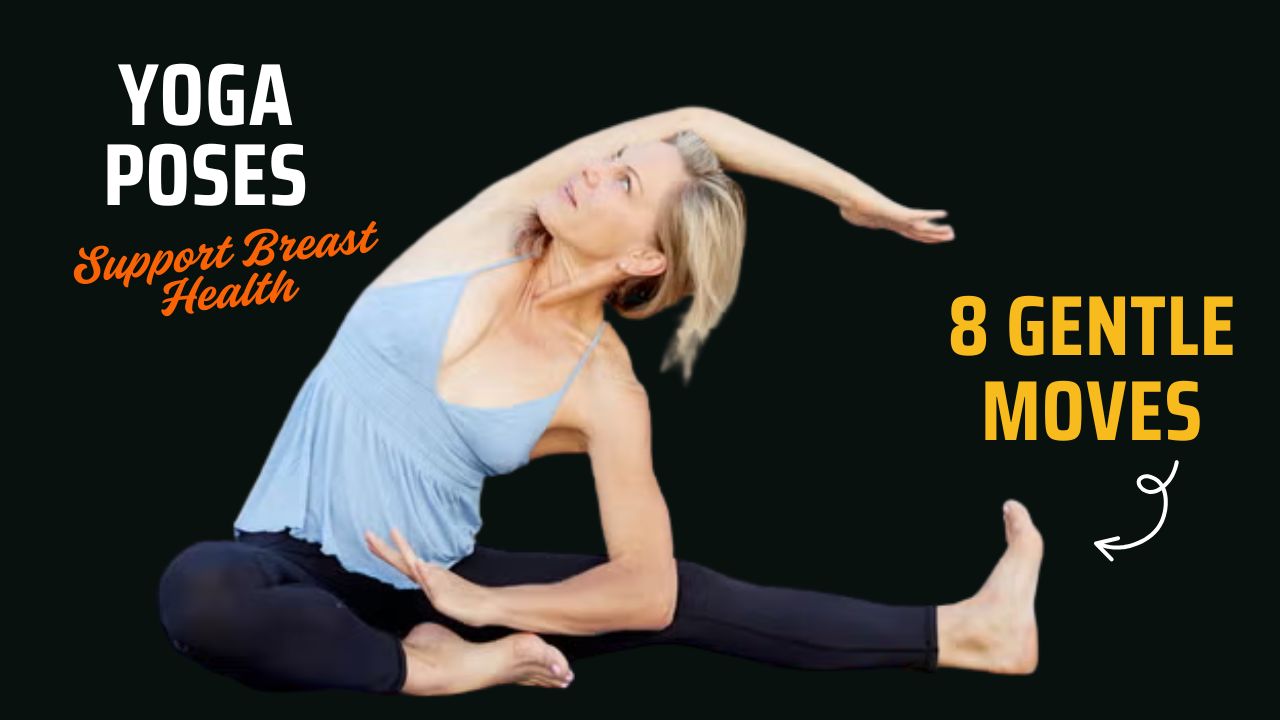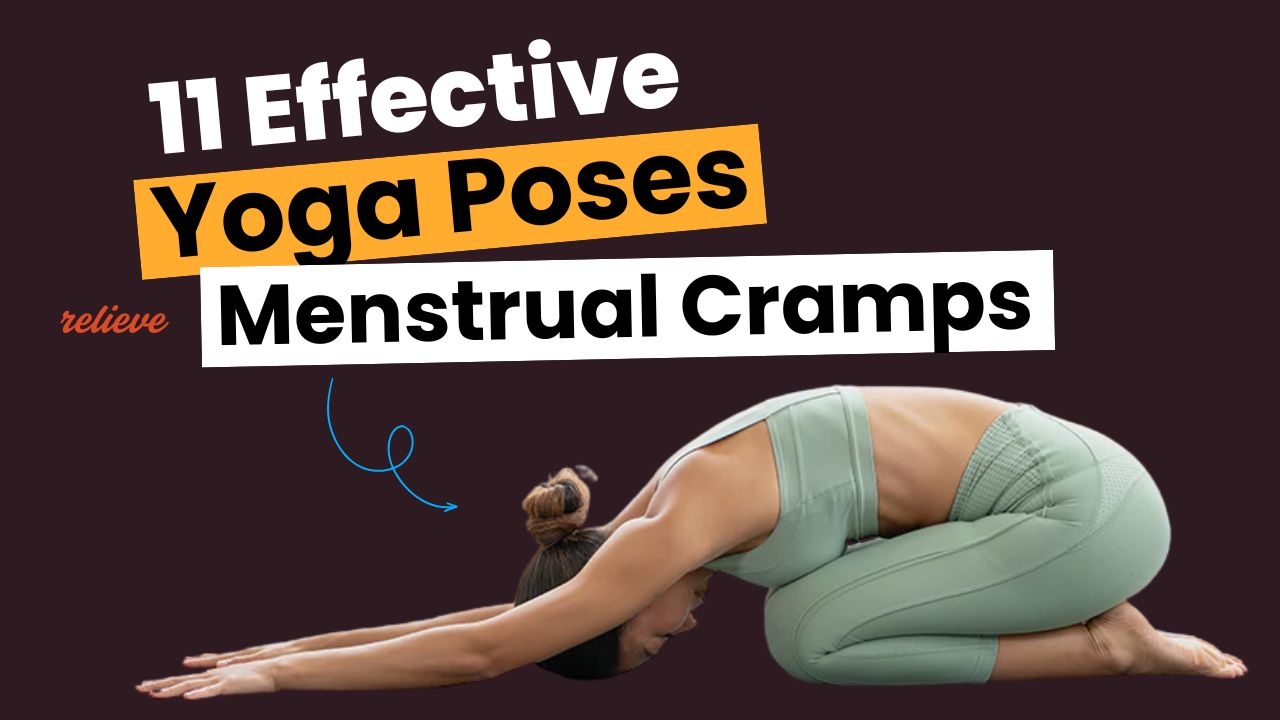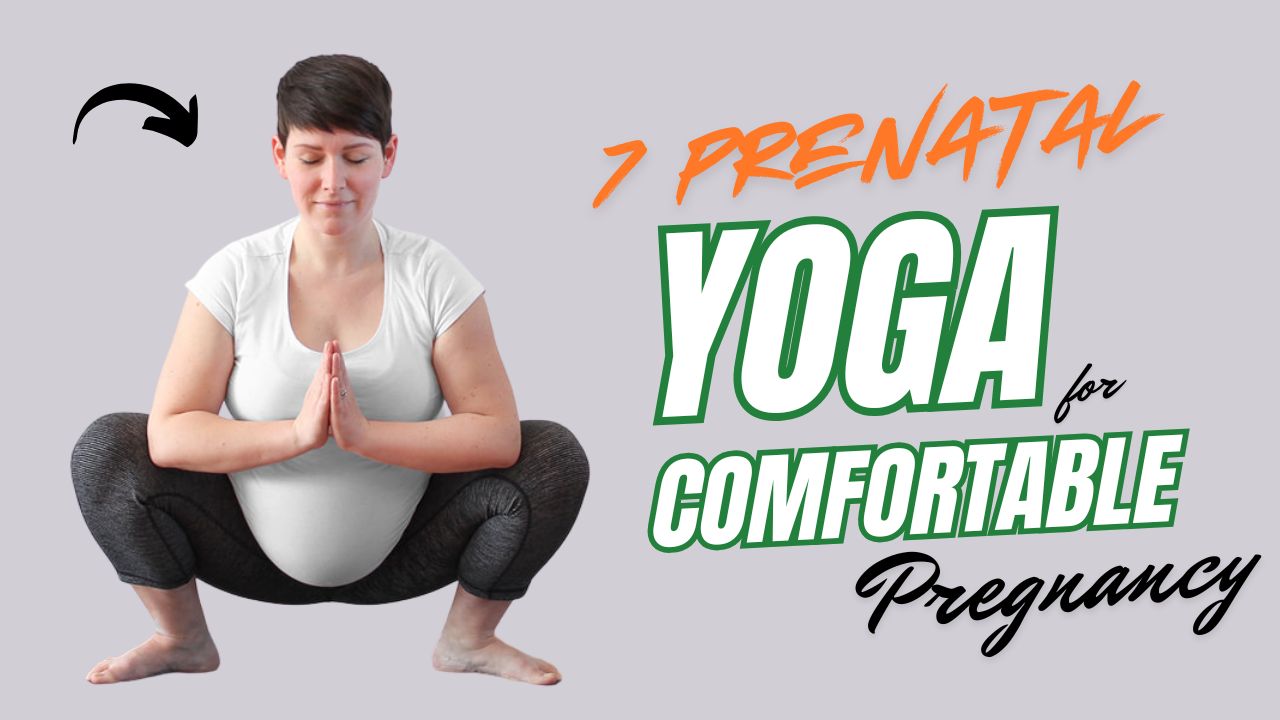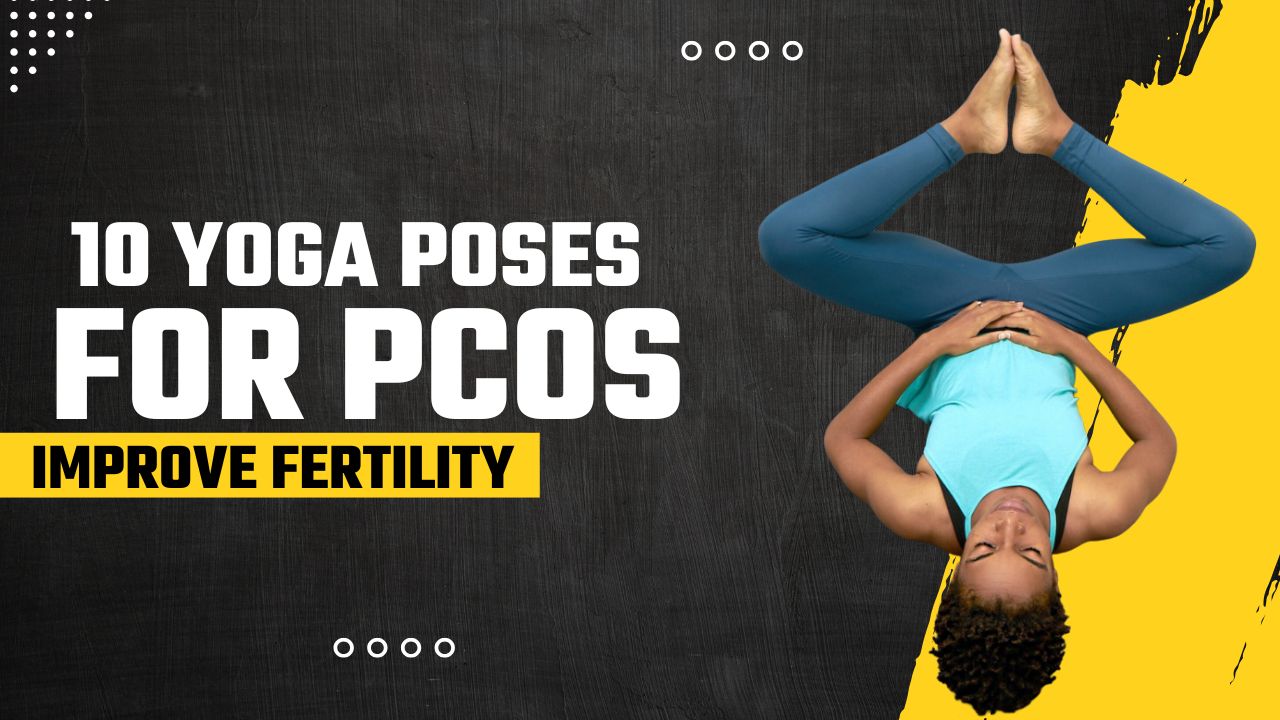Did you know that tight hips might be silently weakening your pelvic floor muscles?
Most people associate pelvic health with kegels or post-pregnancy care, but the truth runs deeper — into your hips.
The pelvic floor and hips are closely connected through fascia, muscle groups, and joint mobility. When your hips are tight, stiff, or weak, they can restrict the function and stability of your pelvic floor.
On the other hand, hip-opening yoga poses not only release stored tension but also activate, support, and strengthen your pelvic floor from the ground up.
Whether you’re dealing with lower back pain, urinary issues, reduced core strength, or just want to build a more resilient and mobile body — integrating the right hip-opening poses can make a huge difference.
Below, we’ll walk you through 11 powerful yet accessible yoga poses that open your hips and support pelvic floor health — step-by-step.
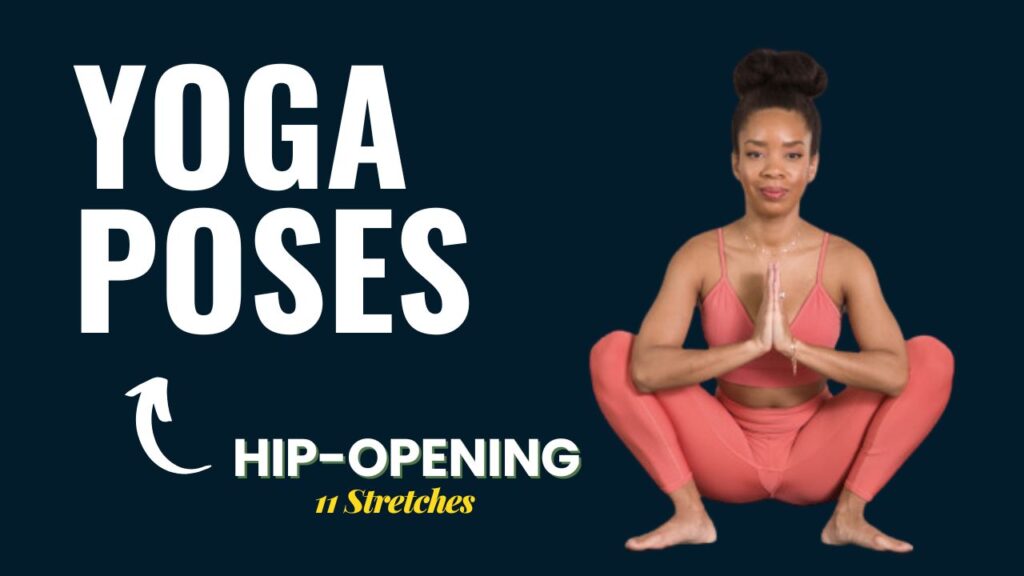
Table of Contents
What Can Happen After 30 Days of Practicing These Hip-Opening Poses
| Positive Changes You May Notice | Why It Happens |
|---|---|
| Improved hip flexibility and range of motion | Regular hip-opening stretches reduce tightness in muscles and connective tissues |
| Better pelvic floor engagement and control | Mindful movement and breathwork build neuromuscular connection with pelvic muscles |
| Reduction in lower back, hip, or groin tension | Tight hips and weak pelvic floor often contribute to postural imbalances |
| Enhanced core strength and stability | These poses activate deep core and pelvic muscles through slow, controlled movement |
| Improved posture and spinal alignment | Releasing hip tension improves the way you stand, sit, and move |
| Decreased urinary urgency or leakage (in some cases) | Balanced pelvic floor strength supports bladder control |
| Greater body awareness and stress reduction | Deep breathing + slow movement calms the nervous system and increases mindfulness |
| Increased comfort during daily movements or exercise | Hips become more mobile, allowing smoother and more functional movement patterns |
Do’s & Don’ts for Hip-Opening Yoga & Pelvic Floor Strengthening
| Do | Don’t |
|---|---|
| Warm up your body with light movement before starting the poses | Jump directly into deep stretches with cold muscles |
| Use props like blocks or cushions for support and comfort | Force your body into a pose beyond your current flexibility |
| Breathe deeply and steadily through each pose | Hold your breath or strain while trying to “push” deeper |
| Focus on form and pelvic awareness over how deep you go | Compare your flexibility to others or rush through poses |
| Practice regularly (3–4 times per week) for best results | Expect instant changes after just one or two sessions |
| Keep your spine aligned and core gently engaged in active poses | Collapse your posture or let your back overarch |
| Listen to your body and back off if you feel sharp or pinching pain | Ignore discomfort or push through pain just to complete a routine |
| Seek professional advice if you have pelvic floor disorders | Self-diagnose or follow generic routines if you’re dealing with symptoms |
11 Yoga Poses to Strengthen Your Pelvic Floor
1. Malasana (Yogi Squat)
How It Helps:
Malasana stretches the inner thighs, lower back, and hips while encouraging the engagement of the pelvic floor muscles.
How to Do:
- Stand with feet slightly wider than hip-width.
- Turn your toes out slightly.
- Bend your knees deeply and lower into a squat.
- Bring your palms together at your chest and press your elbows into your knees.
- Lengthen your spine and lift through the pelvic floor.
Hold for 30 seconds to 1 minute, focusing on breath and pelvic engagement.
2. Supta Baddha Konasana (Reclining Bound Angle Pose)
How It Helps:
This gentle pose passively opens the hips and pelvis while calming the nervous system. It’s ideal for deep pelvic floor relaxation.
How to Do:
- Lie on your back.
- Bring the soles of your feet together and let your knees fall open.
- Place cushions under your knees for support.
- Rest your hands on your belly or by your sides.
Hold for 3–5 minutes, breathing deeply into your pelvic region.
3. Anjaneyasana (Low Lunge)
How It Helps:
Targets hip flexors and lengthens the psoas — a deep muscle influencing both pelvic posture and core support.
How to Do:
- Start in a lunge position with the back knee on the mat.
- Ensure front knee is stacked over the ankle.
- Sink your hips forward gently.
- Lift your arms overhead or rest them on your thigh.
- Tuck your pelvis slightly to avoid overarching the back.
Hold for 30 seconds per side, focusing on hip and pelvic awareness.
4. Baddha Konasana (Butterfly Pose)
How It Helps:
This pose stretches the inner thighs and groin, which can reduce pressure and restriction on the pelvic floor muscles.
How to Do:
- Sit with a straight spine.
- Bring the soles of your feet together.
- Let your knees fall out to the sides.
- Hold your feet with your hands and keep your spine tall.
Hold for 1–2 minutes, maintaining a soft pelvic lift as you breathe.
5. Utthan Pristhasana (Lizard Pose)
How It Helps:
A deep hip opener that also stretches the pelvic floor-adjacent muscles such as the hip flexors and groin.
How to Do:
- From downward dog, step your right foot outside your right hand.
- Lower your back knee if needed.
- Keep both hands grounded or drop to forearms for a deeper stretch.
- Relax your hips toward the mat.
Hold for 30 seconds to 1 minute on each side.
6. Setu Bandhasana (Bridge Pose)
How It Helps:
Unlike other hip openers, this one activates and strengthens the pelvic floor and glutes, promoting lift and support.
How to Do:
- Lie on your back with knees bent and feet hip-width apart.
- Press into your heels and lift your hips off the mat.
- Engage your inner thighs and pelvic floor.
- Keep the chest open and neck relaxed.
Hold for 30 seconds, then lower slowly.
7. Eka Pada Rajakapotasana (Pigeon Pose)
How It Helps:
Deeply stretches the hip rotators, especially the piriformis — a muscle that can affect pelvic stability when tight.
How to Do:
- From a tabletop or downward dog, bring one leg forward, bending the knee.
- Extend the other leg back.
- Keep hips square and fold forward.
- Use props under the hip for support if needed.
Hold for 1–2 minutes on each side.
8. Happy Baby Pose (Ananda Balasana)
How It Helps:
Gently opens the hips and groin while bringing awareness to pelvic alignment and breath.
How to Do:
- Lie on your back and draw your knees toward your chest.
- Grab the outsides of your feet or shins.
- Gently pull your knees toward the floor.
- Keep your spine grounded and relax your jaw.
Hold for 1 minute, rocking gently side to side.
9. Cow Face Pose (Gomukhasana)
How It Helps:
Targets deep external hip rotators and lengthens tissue around the pelvic bowl.
How to Do:
- Sit and stack one knee over the other.
- Bring feet toward the sides of the hips.
- Sit tall and breathe into the stretch.
- You may also fold forward to intensify the stretch.
Hold for 30–60 seconds each side.
10. Wide-Legged Forward Fold (Prasarita Padottanasana)
How It Helps:
Lengthens the hamstrings and inner thighs while encouraging a gentle pelvic tilt and release.
How to Do:
- Stand with legs wide.
- Hinge at your hips and fold forward.
- Place your hands on the mat or blocks.
- Keep spine long and let your head hang.
Hold for 30 seconds to 1 minute.
11. Supine Figure Four Stretch
How It Helps:
A reclined hip-opener that gently targets the piriformis and outer hips — key contributors to pelvic floor function.
How to Do:
- Lie on your back.
- Cross one ankle over the opposite thigh.
- Thread your hands through the gap and hug the thigh toward your chest.
- Keep your head and shoulders grounded.
Hold for 1 minute per side, breathing evenly.
Interesting Fact:
Many people think strengthening the pelvic floor means only contracting or doing kegels — but flexibility and alignment of the surrounding muscles (like those in your hips and glutes) are just as critical.
When the pelvic floor is too tight, it can be just as problematic as when it’s weak. That’s why hip-opening poses that support balance — not just strength — are vital for long-term pelvic health.
Conclusion: Flow with Intention
Integrating these 11 hip-opening yoga poses into your weekly practice can help you cultivate a stronger, more supported pelvic floor. But remember — consistency is key.
You don’t need to do all 11 poses every day. Even selecting 3–4 and practicing them regularly can lead to noticeable changes in mobility, core engagement, and pelvic control.
In the end, it’s not just about flexibility — it’s about function.
Open your hips, free your pelvis, and reclaim balance from the inside out.
Frequently Asked Questions (FAQs)
Can hip-opening yoga poses really strengthen the pelvic floor?
Yes. While these poses primarily increase hip mobility, they also engage and relax muscles connected to the pelvic floor. This balance of release and activation supports pelvic strength, stability, and function.
How often should I practice these poses for best results?
Aim for 3–4 times a week. Even a short 15–20 minute routine focusing on 3–5 of these poses can make a difference over time.
Can beginners do these hip-opening poses safely?
Absolutely. Most of the poses in this list are beginner-friendly. Props like yoga blocks, cushions, or bolsters can help modify the poses for comfort and safety.
Is there a specific time of day that’s best for these exercises?
There’s no “best” time — but many people find doing hip-opening sequences in the evening helps release tension from sitting or standing all day and improves sleep quality.
Can these yoga poses help with pelvic floor dysfunction or prolapse?
These poses can support pelvic floor function, but if you’re dealing with diagnosed pelvic floor issues like prolapse, incontinence, or chronic pain, consult a pelvic floor physical therapist or specialist before starting a new routine.
Should I combine these poses with Kegel exercises?
In many cases, yes. Yoga and kegels can complement each other. But not everyone needs kegels — especially those with a tight pelvic floor. It’s best to understand your specific condition before combining practices.
How do I know if I’m engaging my pelvic floor correctly during the poses?
You should feel a subtle lifting sensation in the lower pelvic area without holding your breath or squeezing excessively. A pelvic floor therapist can help assess and guide you if you’re unsure.
Can men benefit from these poses too?
Definitely. Men also have a pelvic floor, and these poses can enhance mobility, reduce tension, and support core stability for them as well.
Do these poses help with lower back or hip pain?
Yes. Tight hips and a weak or imbalanced pelvic floor often contribute to lower back discomfort. These poses target the root of that tension, helping relieve and prevent pain.

